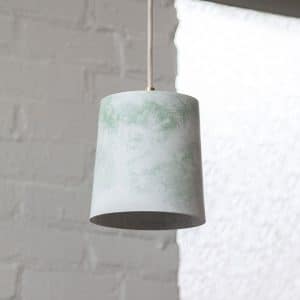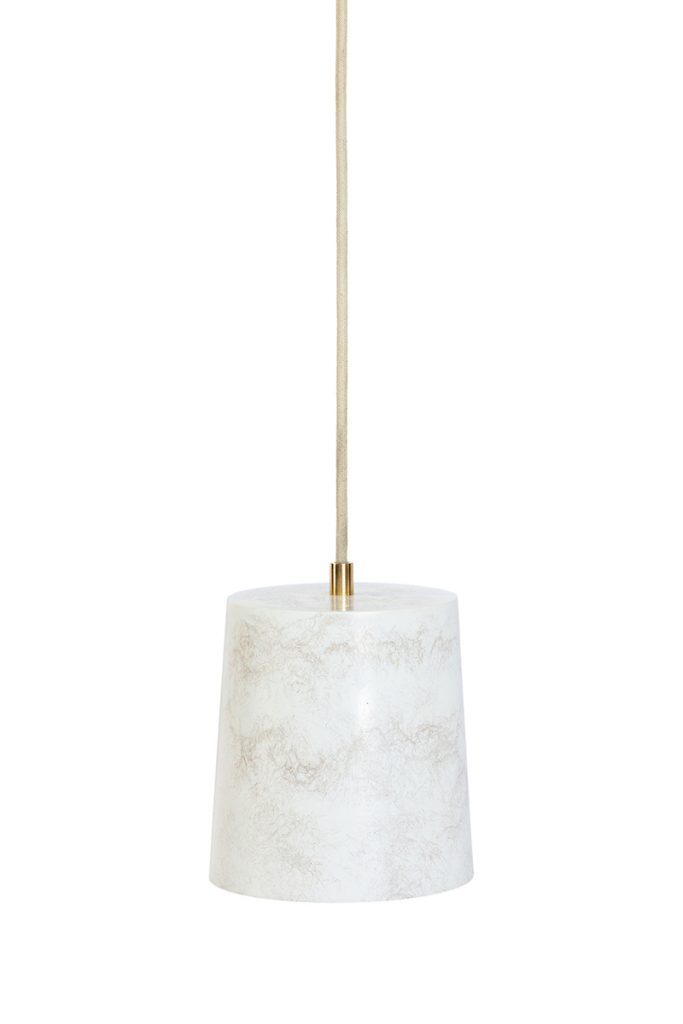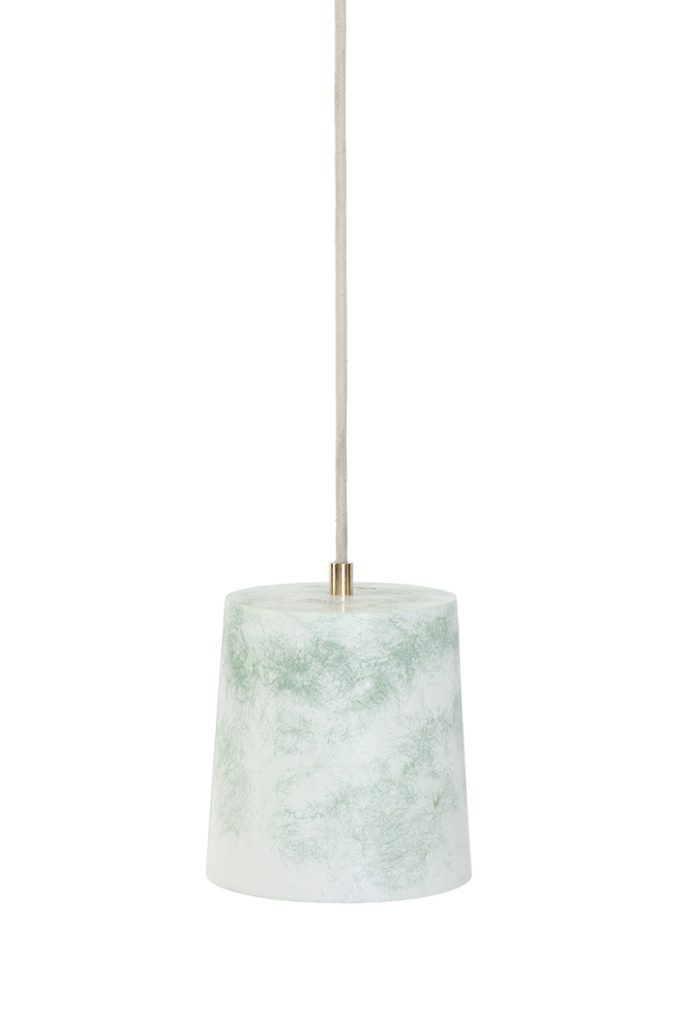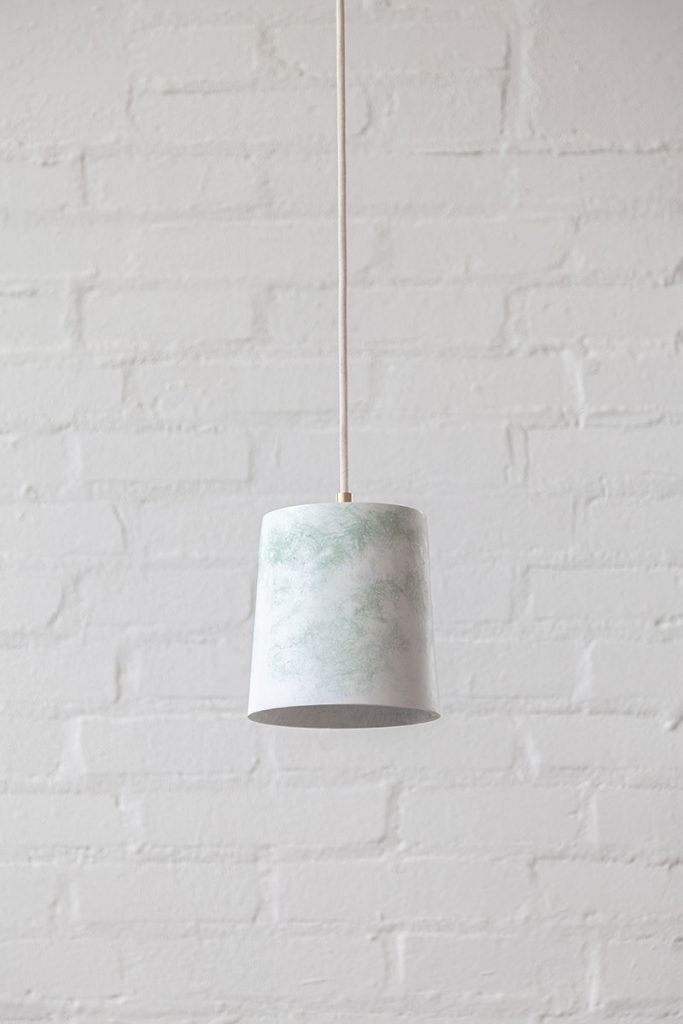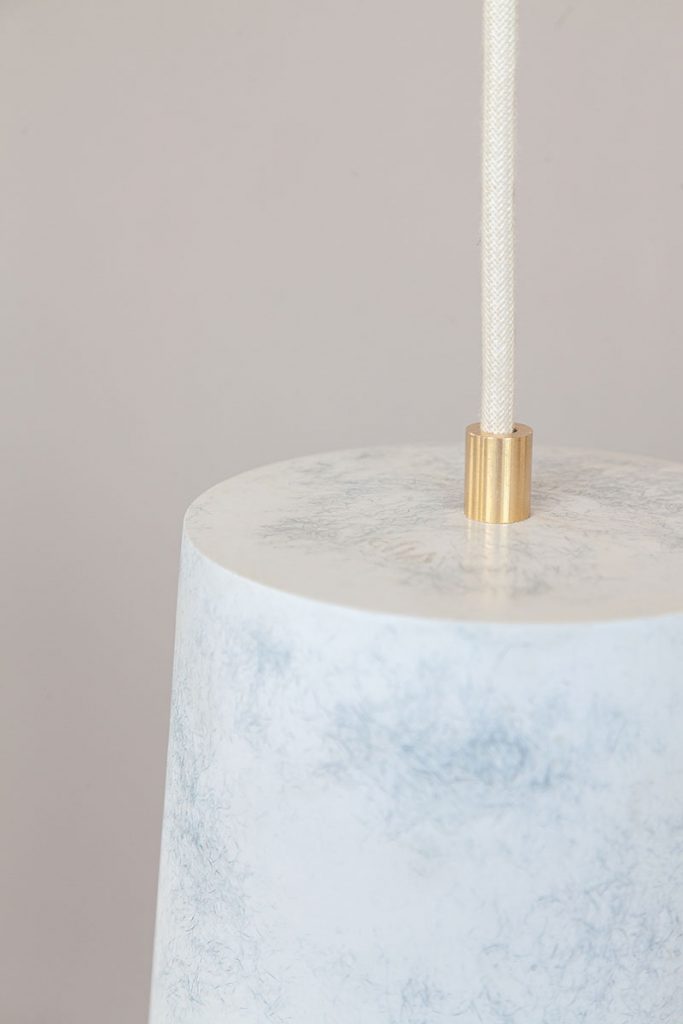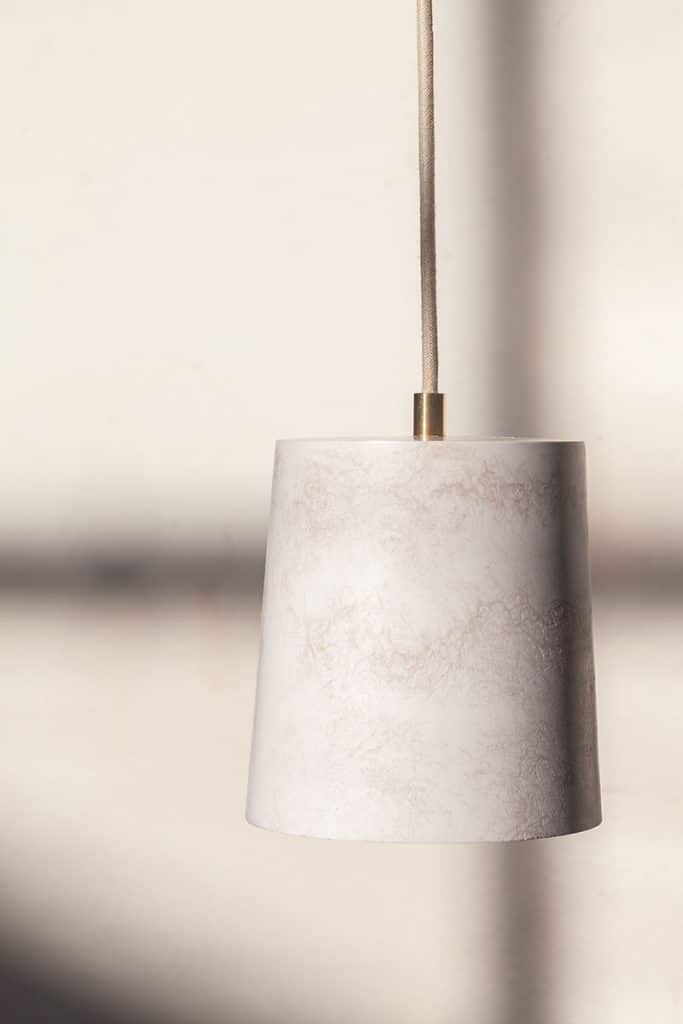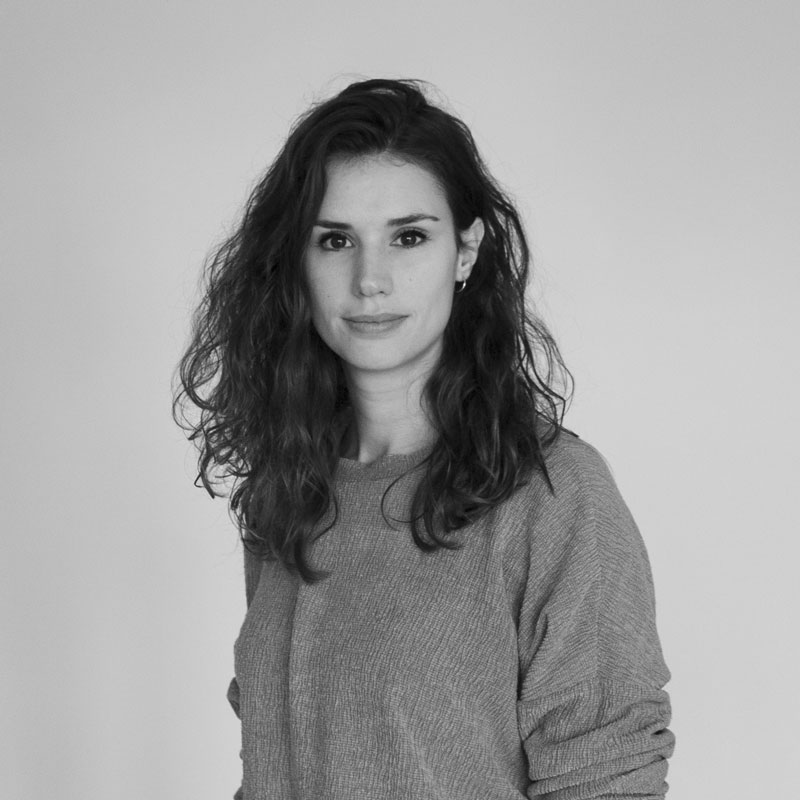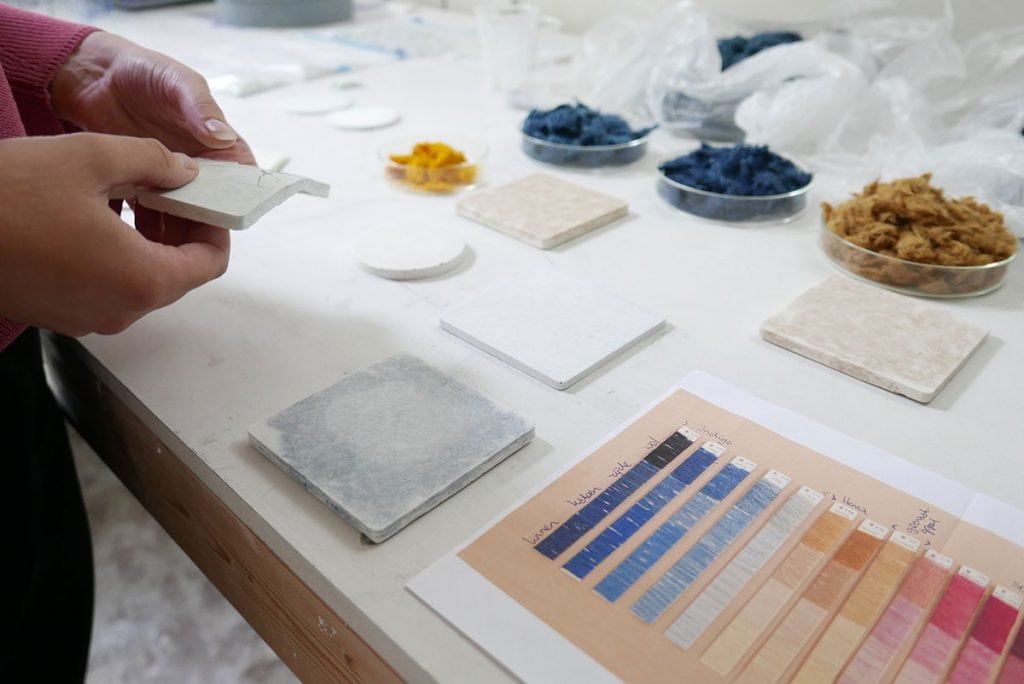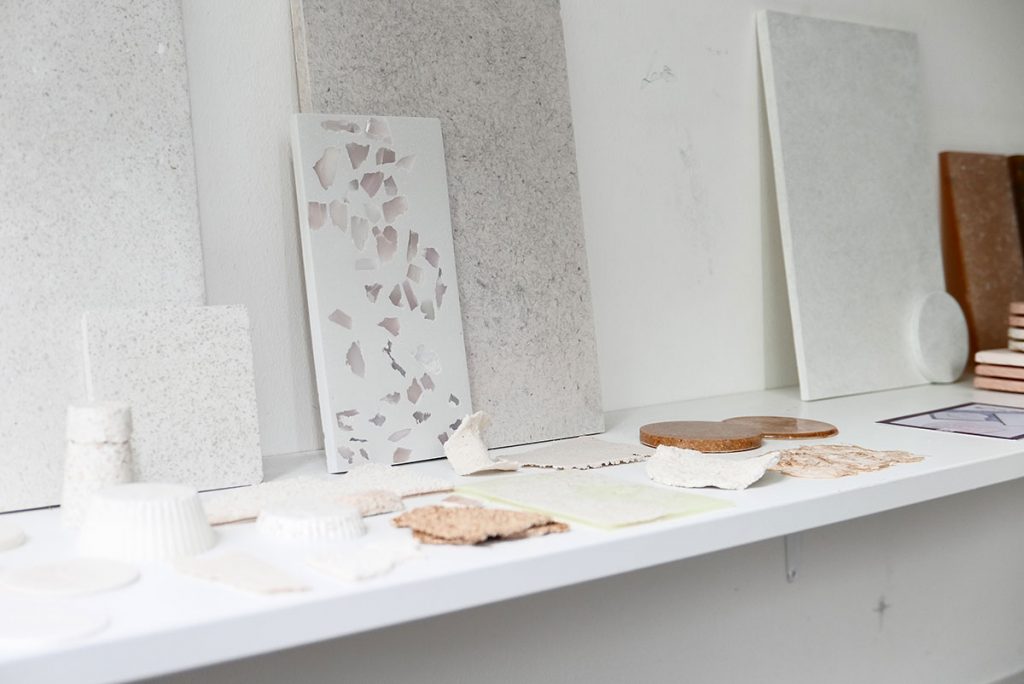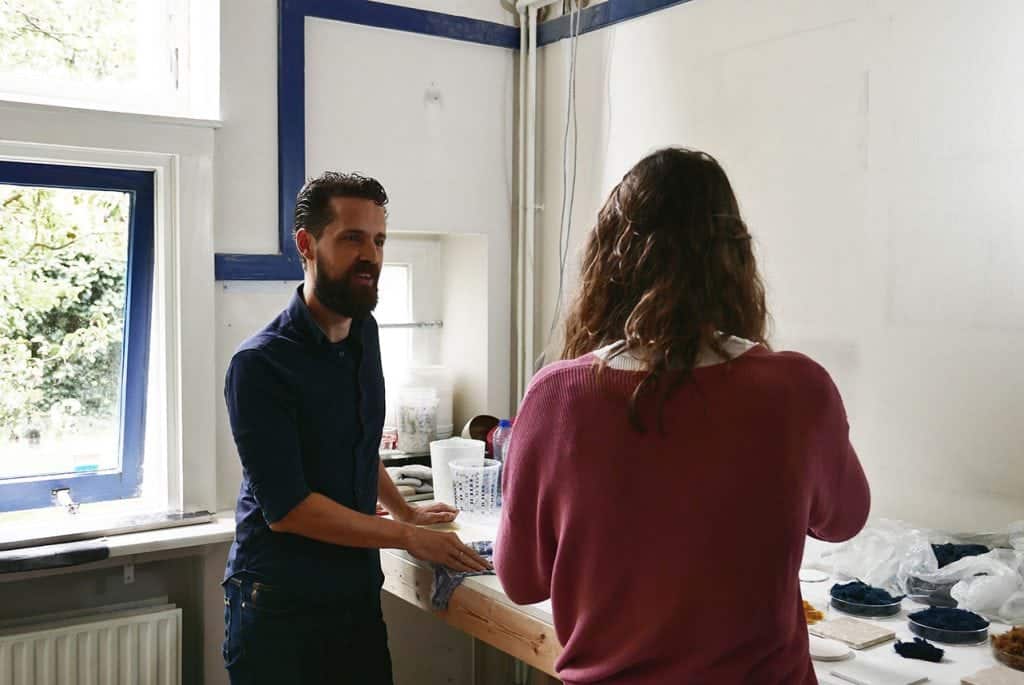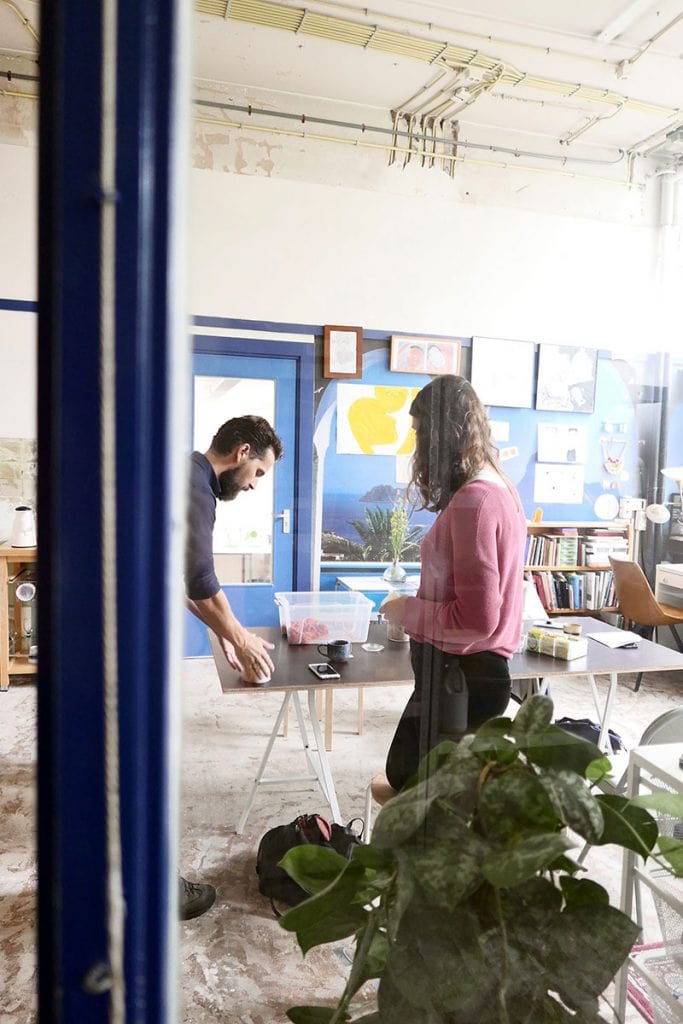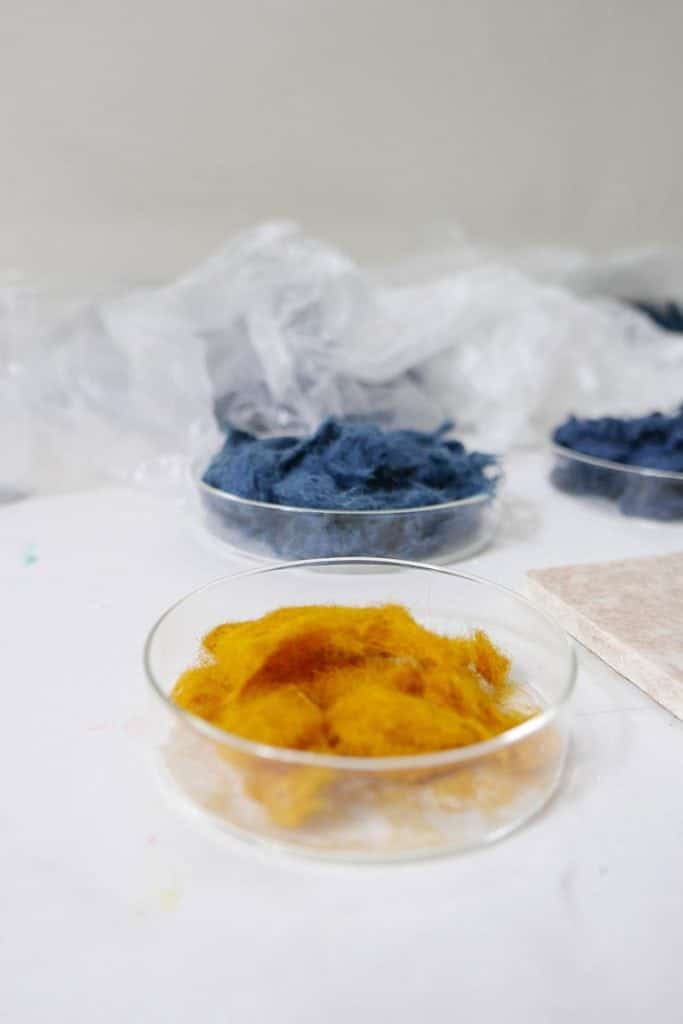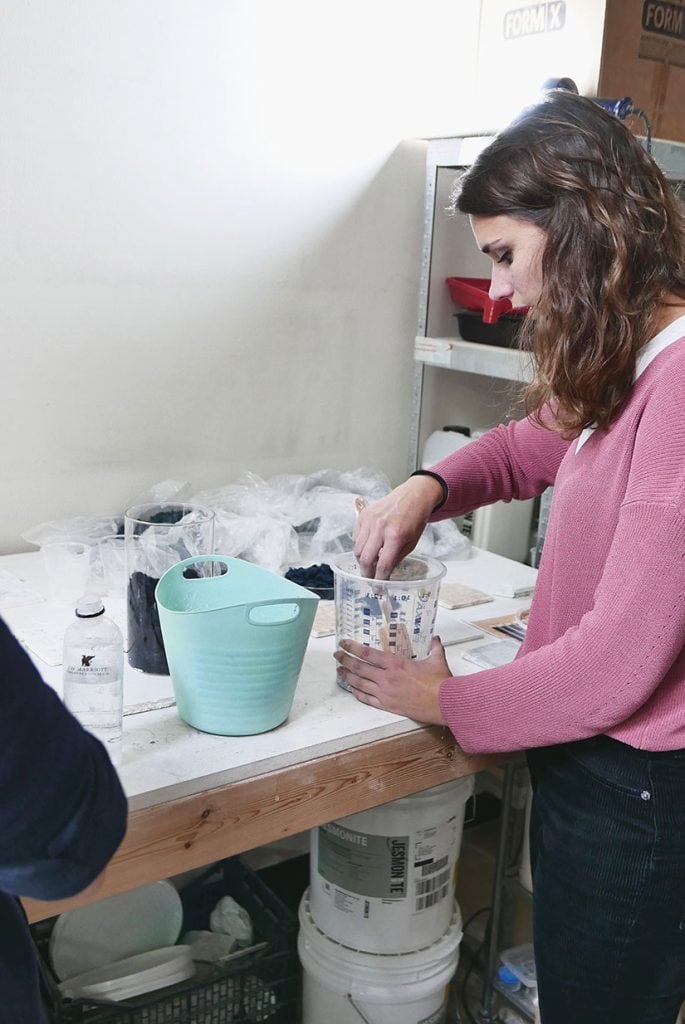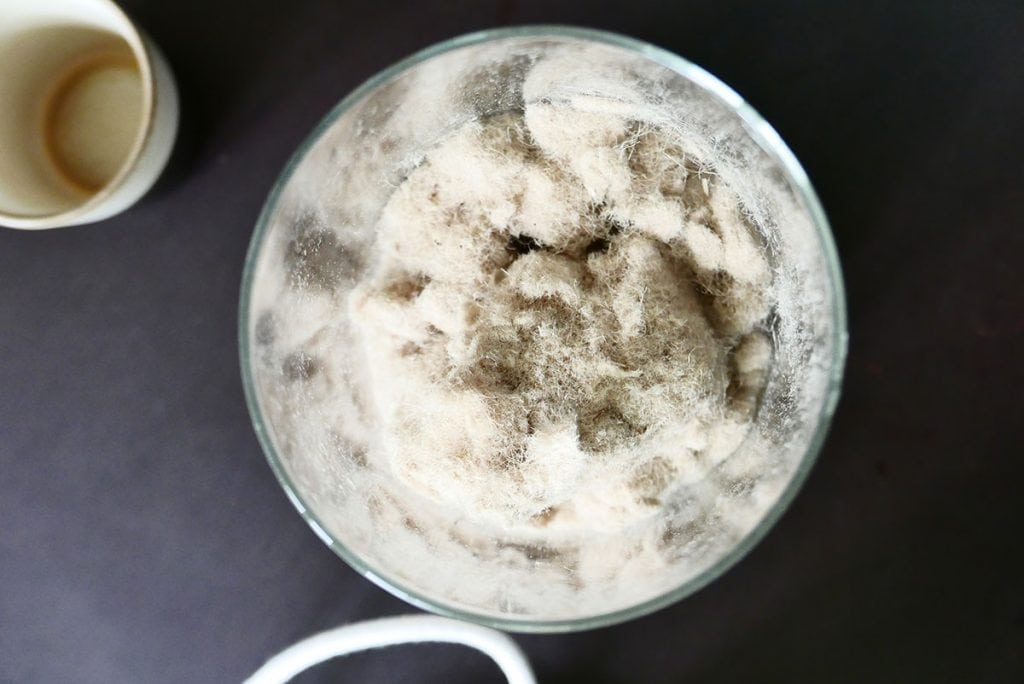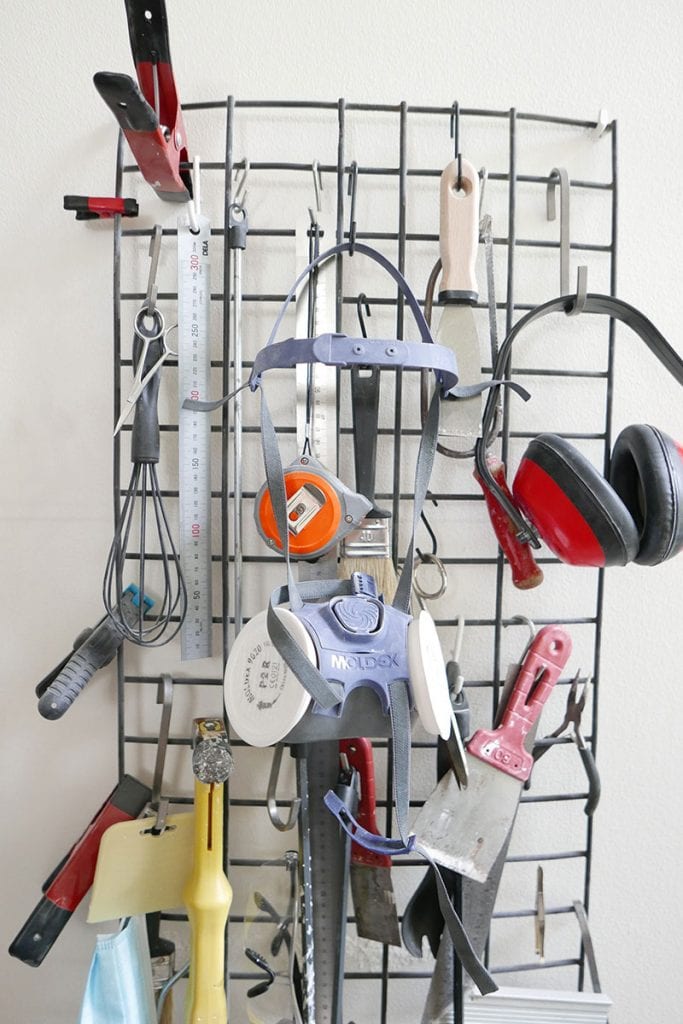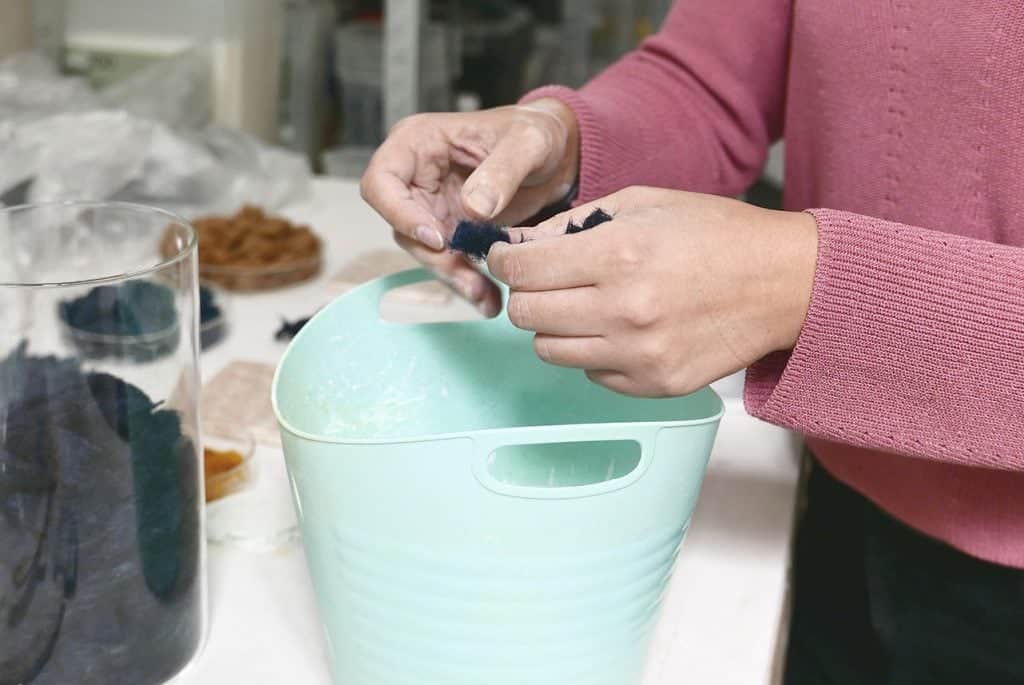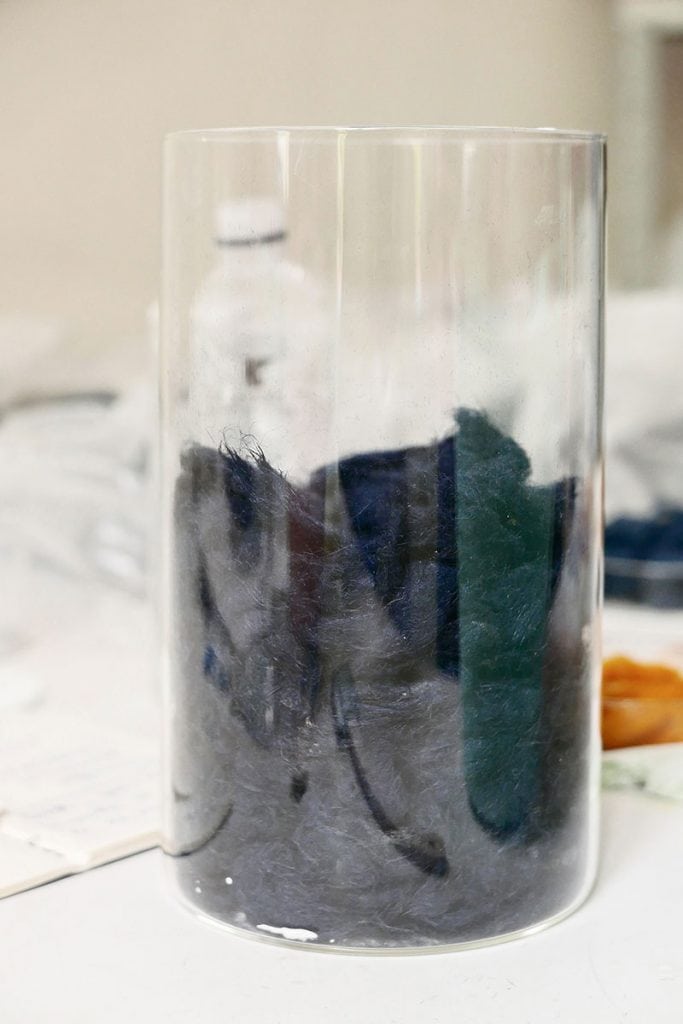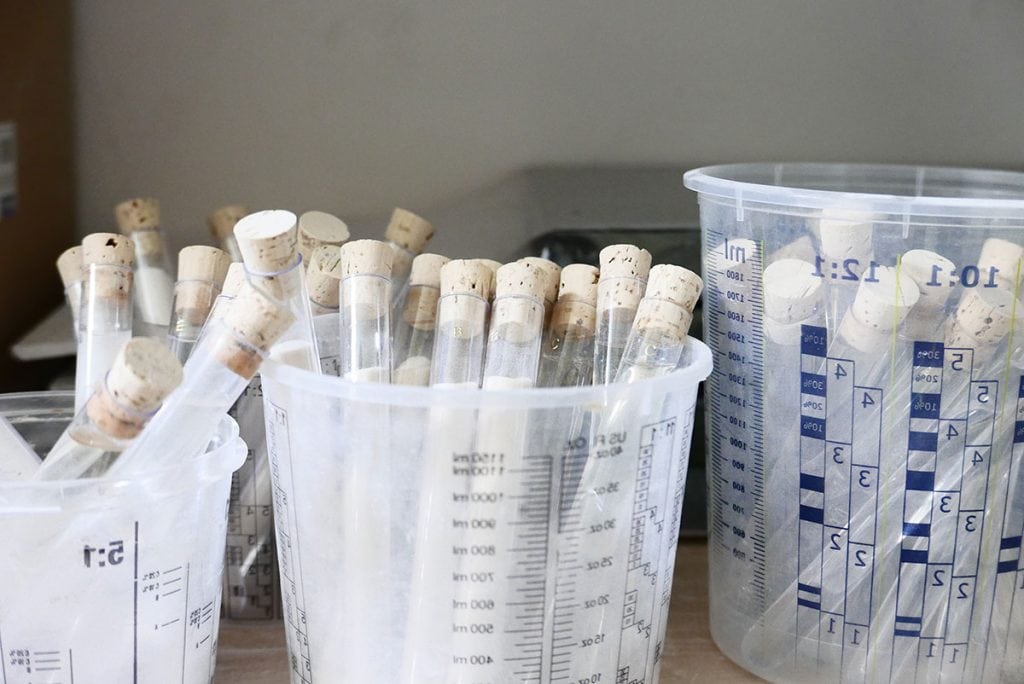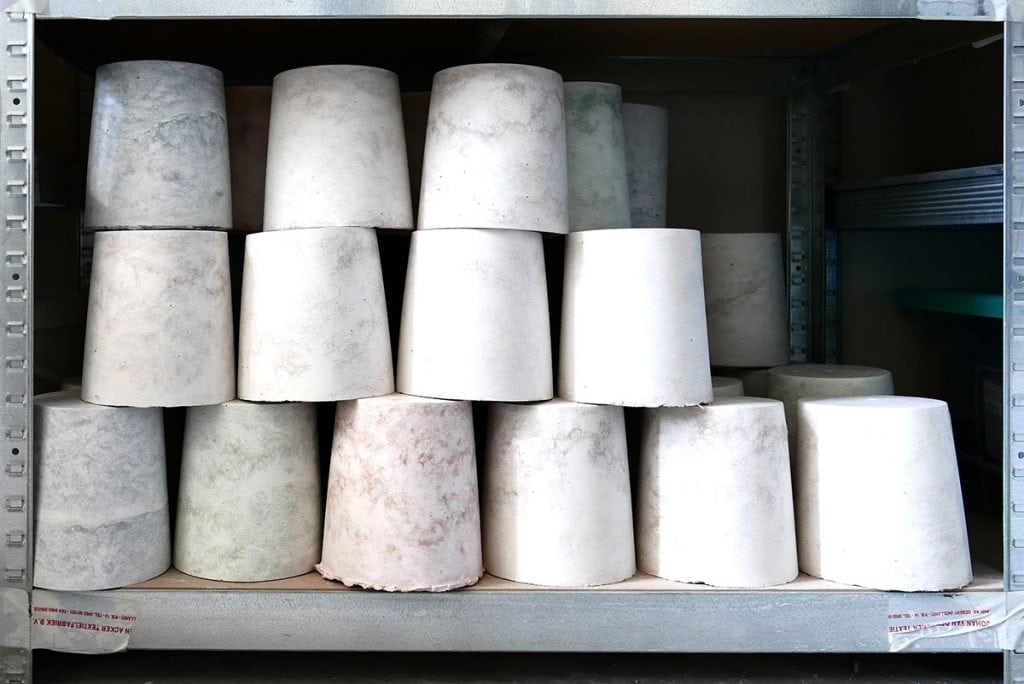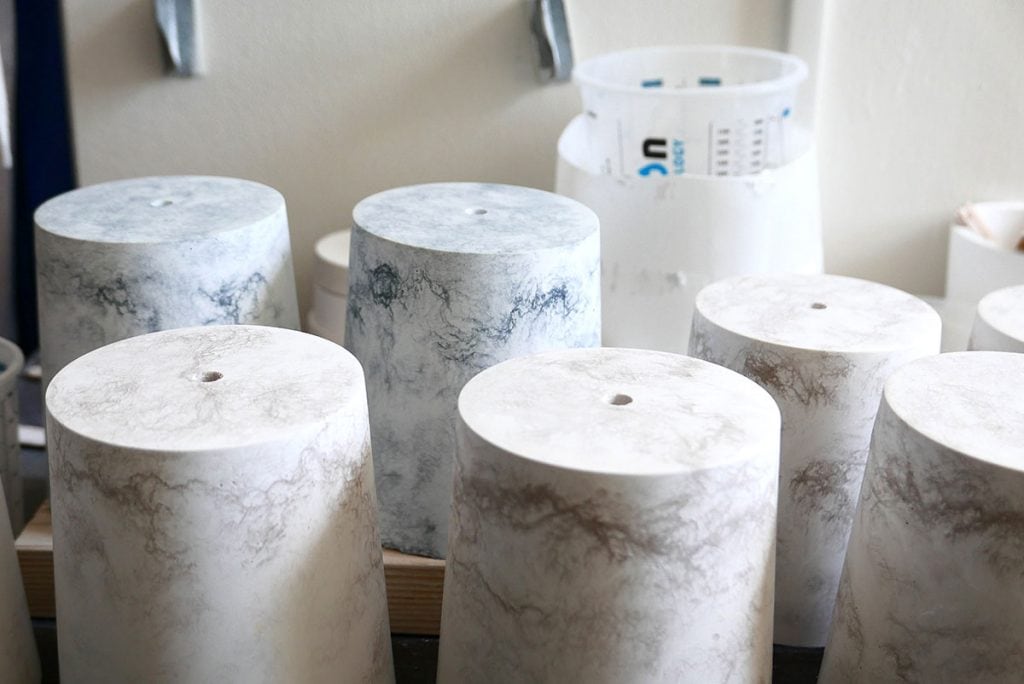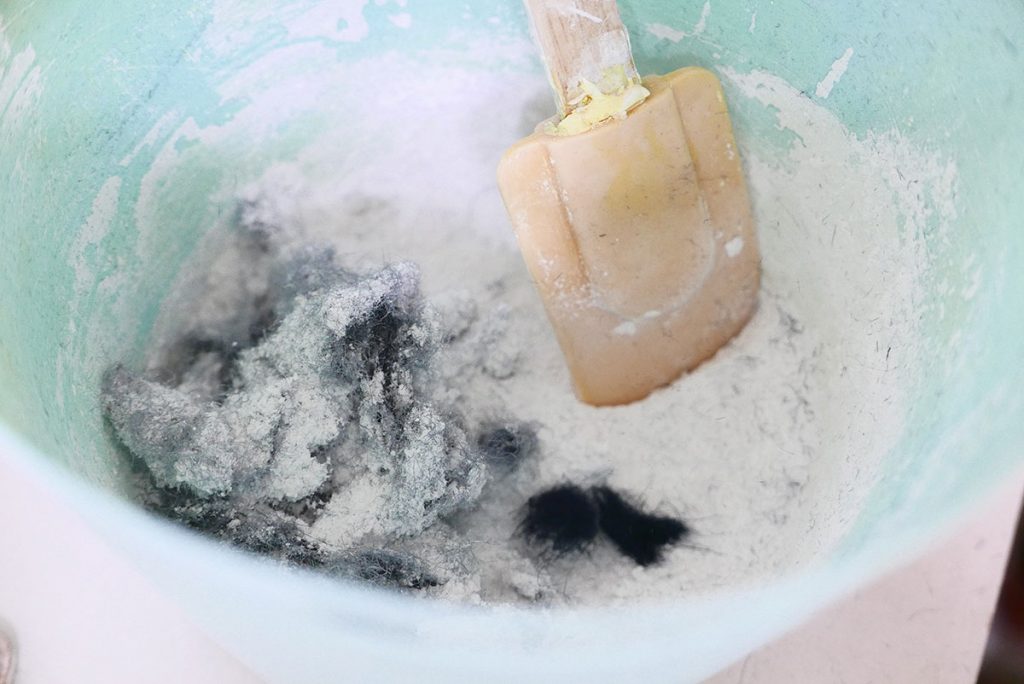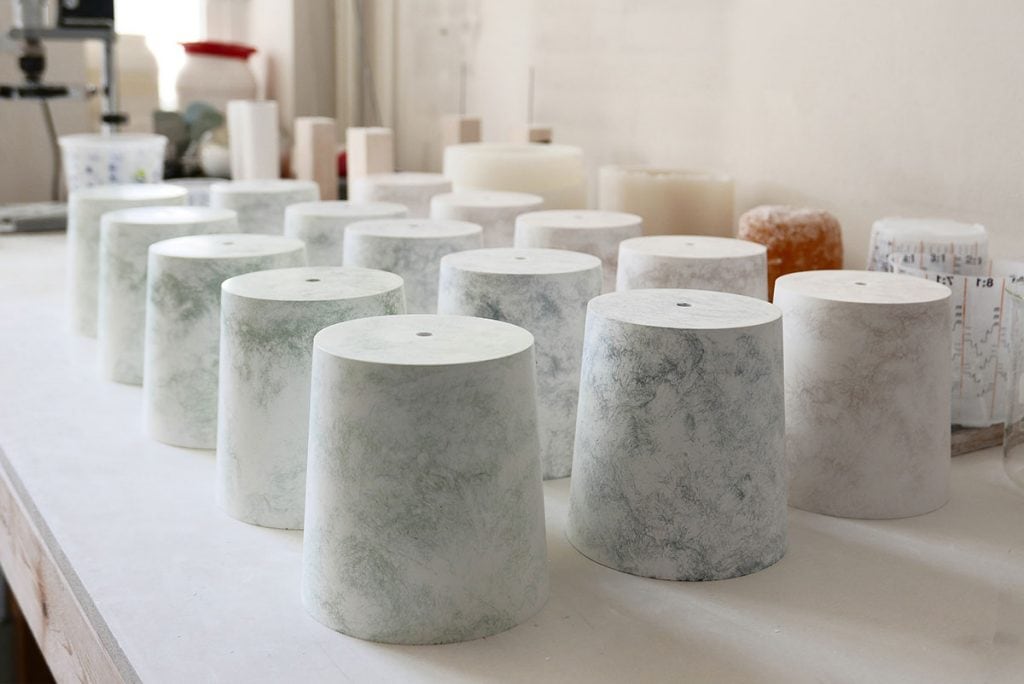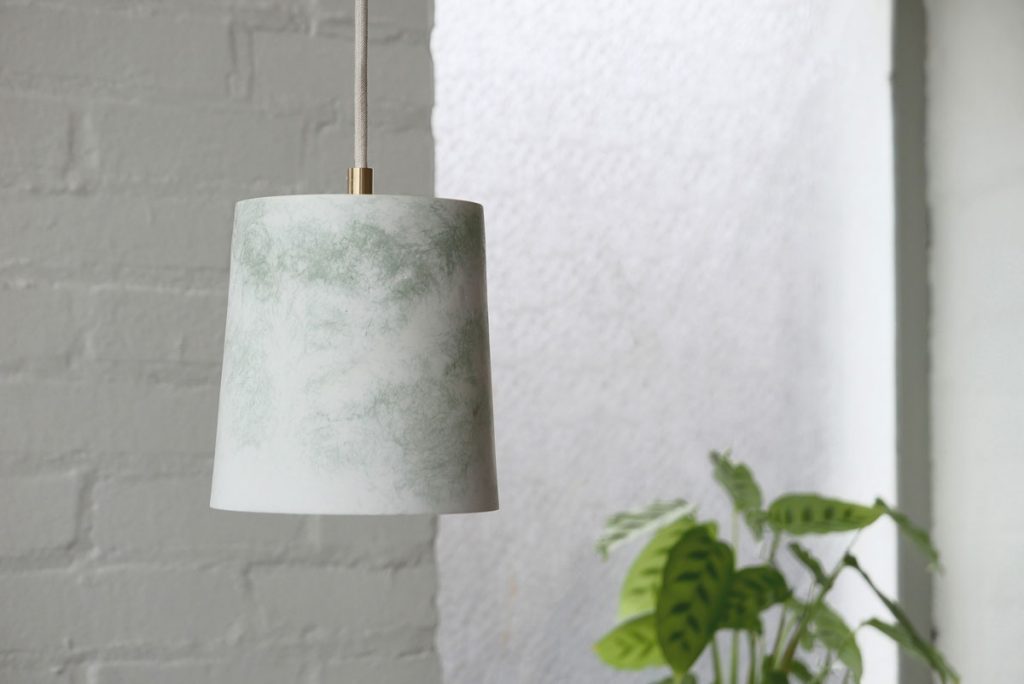Jute
Light
The Jute Light is made of 50% jute fibres and 50% porcelain plaster. The combination of jute with plaster ensures that both materials strengthen each other.
The jute fiber acts as reinforcement in the plaster and at the same time creates a special and unique pattern. The strength and beauty of the material is emphasized in the minimalist design of the pendant lamp.
The jute fibers used, in the form of a kind of fluff, come from the flooring factory of Forbo. This natural fiber is the only waste material that comes from the production of Forbo's linoleum. By working with this waste material, the linoleum becomes a zero-waste product.
Plaster, like glass, is endlessly recyclable and can be widely used after processing. Before the two materials are mixed, the fibres preferably receive a natural colour bath, such as indigo, turmeric, or red ochre.
-
Product in de uitverkoopJute Light | sustainable design pendant lamp with dimmable LED, porcelain plaster & juteOorspronkelijke prijs was: € 239,00.€ 95,60Huidige prijs is: € 95,60.
In stock
Variants:
Currently, the Jute Lights are available in 3 varieties: plain jute, green and indigo blue. They have an E14 fitting and are delivered including a LED bulb. The diameter of the shades is 14 centimeters.
the Vij5 steps
of the
Jute Light
Transparency of the production chain comes naturally to us.
For us, that doesn't just mean giving information about where something has been produced. Our chain starts much earlier: with the designer of the product!
We'll tell you the whole story. Click on the buttons to discover the different steps:
DESIGN
The Jute Light is a mood lamp designed by Atelier LVDW, the design studio of Laura van de Wijdeven. With her studio, Laura researches and designs materials with a focus on organic residual flows and bio-based material. These sustainable or circular materials are then translated into various interior products.
She is inspired by the calming effect of nature on human well-being. Maintaining a connection with nature through the materials in your interior is the underlying mission of her work, which is clearly reflected in this Design pendant lamp.
"My work is always material driven: the possibilities of the material lead to the final Design. For me, material always comes first. The start of a new product therefore begins with material experiments rather than at the drawing board."
Laura van de Wijdeven
Prior to the design of the Jute Light, Laura started a material study into the possibilities for using jute fluff, an industrial residual waste stream from the production of Forbo linoleum.
Through numerous experiments, the material 'jute-ceramic' was created: a sturdy material in which the jute fluff is mixed with porcelain plaster. The jute fiber here acts as reinforcement in the plaster and at the same time creates a special and unique pattern.
CURATE + TRANSLATE
The Jute Light has been part of the Vij5 collection since 2021. We are always fascinated by interesting New materials, especially if they have a sustainable character in addition to an aesthetic appearance.
Circular Design appeals to us and Laura's experiments caught our attention, partly because she had already taken a step towards a possible Application for the material she had developed. Together with Laura, we took a closer look at the Jute Light by optimizing the Create process. This made small production runs realistic and it was possible to close the cycle of the material.
CREATE
The Jute Light is handmade in small series by Laura herself in her studio in Rotterdam. Through countless experiments, she has mastered a production process that suits her sustainable approach. The jute fibers are, if desired, colored in a natural way and then mixed in the correct proportion with porcelain plaster and poured into a mold. The end result is finished with beeswax for extra shine and protection. Finally, the cord and fitting are attached to the lampshade.
At the end of its life, the lampshade of the Jute Light is fully recyclable by Atelier LVDW. It is returned to a raw plaster powder from which Laura can make new products again; a great example of circular design.
In the material passport you can find where and by whom the different parts of this product are made.
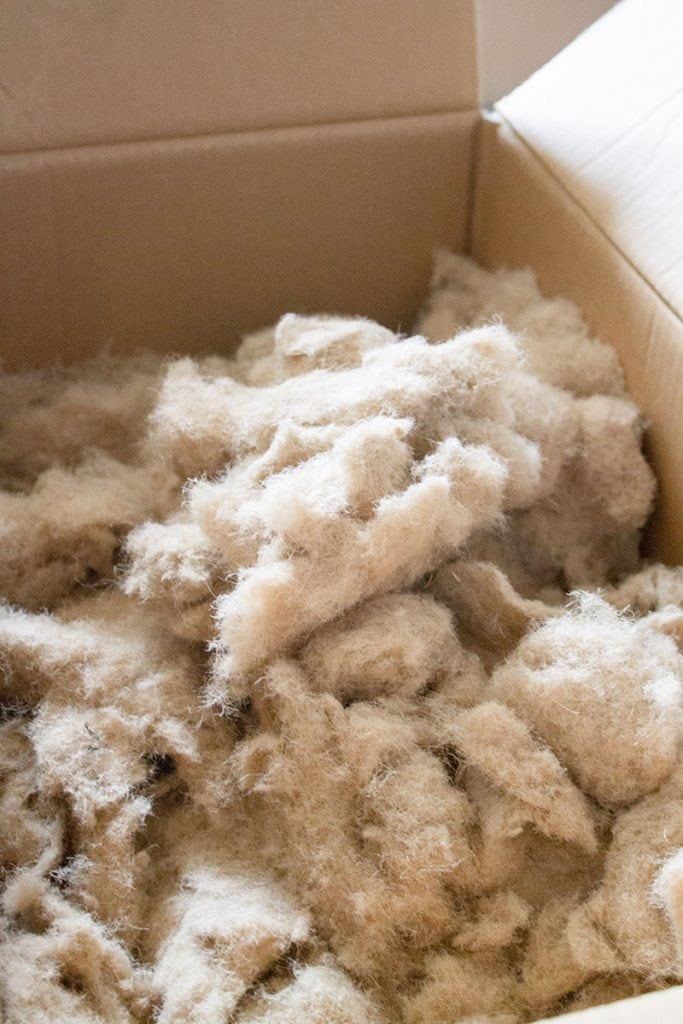
Jute fluff is the material that remains when we vacuum the jute backing. This happens before we feed the cloth through the calender. The removal of ''loose fluff'' is very important. The smoother the cloth, the better. Every small imperfection in the substrate can become visible in the linoleum top surface.
Forbo Netherlands
MATERIAL PASSPORT
Jute Light
Jute fluff
Jute fluff, originating from the Forbo flooring factory in Assendelft (NL).
This natural fiber is the only waste material that comes from the production of Forbo's linoleum. By working with this waste material, the linoleum becomes a zero-waste product.
Origin of jute: Bangladesh.
Forbo works with a factory in Bangladesh that weaves jute underlay specifically for them, which is part of their linoleum product.
Porcelain plaster
Porcelain plaster is an extra hard type of plaster that forms the basis of this lamp.
Pigment
Before the two materials are mixed, the fibers are preferably given a natural color bath. Atelier LVDW is working on its own color recipes for this in its studio in Rotterdam (NL).
Note: The color green is made from a synthetic pigment, the blue color comes from Indigo and is a natural pigment.
Coating
Natural beeswax is applied at the end for a beautiful shine and protection. It makes the material come alive even more.
Production
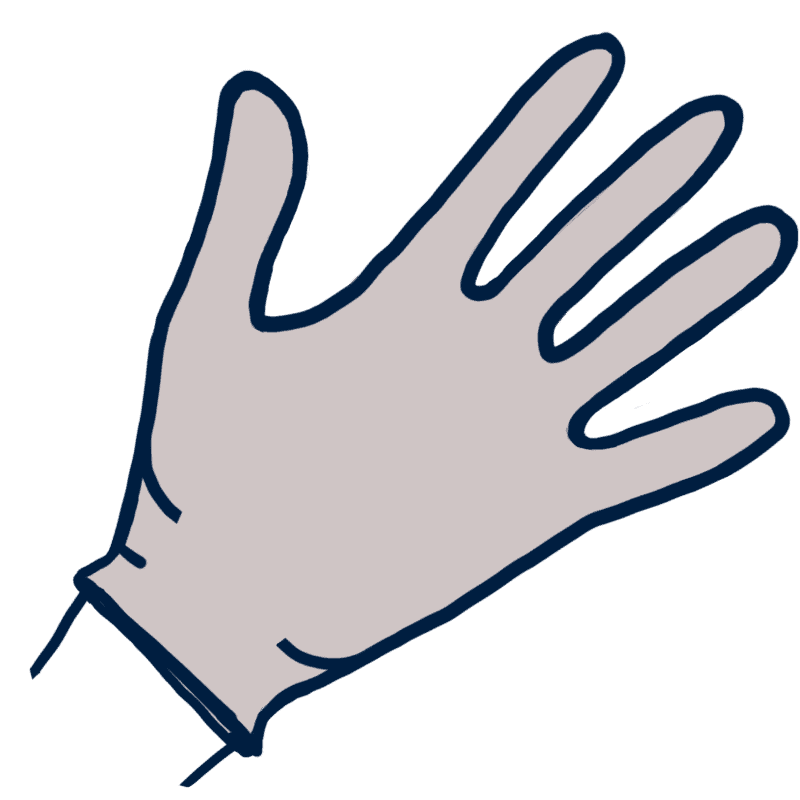
The lamp is handmade by Atelier LVDW in Rotterdam (NL) and assembled and packaged at Vij5 in Eindhoven (NL).
Packaging
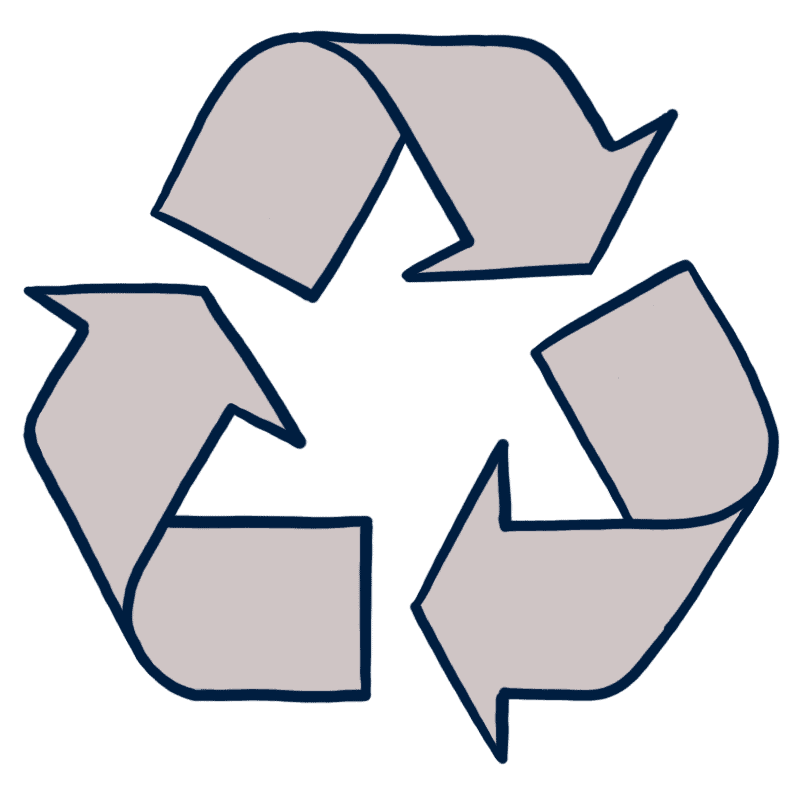
Made-to-measure brown cardboard packaging made from 80% recycled cardboard, produced in the Netherlands
Dimensions
Diameter approx. 14cm
Height 15 cm
In Vij5 collection since 2021
SHARE
Want to see this product in real life?
Come to our showroom in Den Bosch or visit one of our ambassadors or other sales points.
In need of larger numbers or application in a project?
Please contact Arjan and request a quotation here.
Vij5 webshop
All Vij5 products can of course also be ordered directly from our own webshop:
-
Product in de uitverkoopJute Light | sustainable design pendant lamp with dimmable LED, porcelain plaster & juteOorspronkelijke prijs was: € 239,00.€ 95,60Huidige prijs is: € 95,60.
In stock
We work from an easily accessible industrial hall (2 minutes from the A2) near the residential boulevard of Den Bosch. Most products can be seen here, but at the moment the showroom is in use for another large project. So please get in touch and especially let us know what you'd like to see, and we'll see what's possible!
You can make an appointment by mail or phone.
